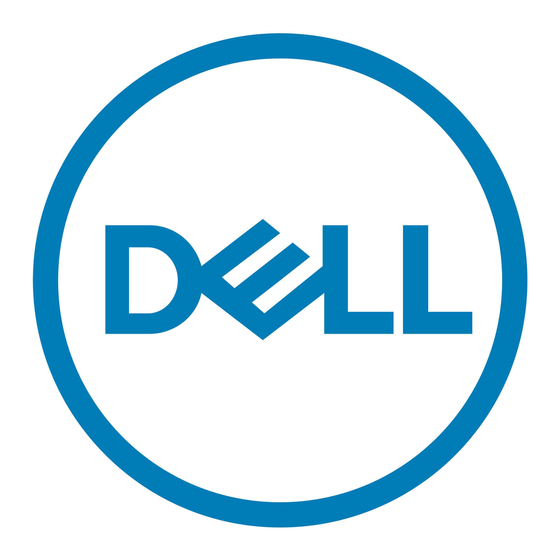Dell Networking S6000 System Testbericht - Seite 9
Blättern Sie online oder laden Sie pdf Testbericht für Schalter Dell Networking S6000 System herunter. Dell Networking S6000 System 19 Seiten. Dell networking s6000 high-performance 10/40 gbe top-of-rack switch
Auch für Dell Networking S6000 System: Handbuch "Erste Schritte (37 seiten)

5.2 About the Dell Networking S5000 Switch
The Dell Networking S5000 is a Layer 2 and Layer 3 10/40 unified storage switch. Two S5000s
were the leaf switches in the leaf spine test infrastructure that evaluated QoS and scalability of
the S6000 in a VDI environment.
The converged, modular S5000 is used for FCoE and in VDI installations that use Fibre Channel
for storage. The primary configuration is 48 10 GbE SFP+ ports and FC/FCoE ports. The S5000
also can be configured with 4 40 GbE QSFP+ ports.
Designed for high-performance data center and computing environments, the S5000 can
facilitate LAN/WAN convergence to help simplify the IT infrastructure. The switch supports Data
Center Bridging (DCB), which enables converged data center networks.
The S5000 can run Ethernet, Internet Small Computer System Interface (iSCSI, the IP-based
storage networking standard for linking data storage facilities), native Fibre Channel (at up to 8
Gbps) and Fibre Channel over Ethernet (FCoE).
6.0 End-user Quality of Experience and Scalability Testing
Testing of the Dell Networking S6000 switch consisted of two phases. Two S6000s served as
spine switches in a leaf frame test fabric that simulated a desktop virtualization environment.
In the first phase of testing, the quality of experience (QoE) for end users was evaluated using a
test bed environment with 200 virtual desktop clients.
In the second phase, the scalability of the Dell Networking S6000 was assessed to 10,000 users
utilizing emulated, stateful, bidirectional traffic representative of traffic used in the 200-user
environment. The S6000 proved in the second phase that it can easily support 10,000 virtual
desktop clients with low latency and without frame loss or other network anomalies.
Different traffic load generators were used in each phase of testing. Traffic observed in the first
phase was captured and replayed in the second phase.
6.1 End-user QoE Tests (200 Virtual Users)
In the first phase of testing, the QoE for end users was evaluated using a sample set of 200
virtual desktop clients.
Horizon View 5.2 was utilized as the desktop virtualization solution. The Horizon View client ran
on two stacked Dell PowerEdge R710 rack servers, which were among six end nodes in the test
bed. Of the other four end nodes, two were PowerEdge 710 servers and two were PowerEdge
R720 servers.
Horizon View 5.2 was built on VMware vSphere. The two R720 servers used the Windows 7
operating system and ran VMware vSphere ESXi hypervisor. Functioning as a "virtual desktop,"
they housed virtual desktop master images and replicas as well as applications in the Microsoft
Office Suite, such as Word, Excel, PowerPoint and Windows Media Player, were used to create
traffic for testing.
Two R710s used the Windows 8 Enterprise operating system and served as Horizon
View clients.
Login VSI, a load testing tool for virtualized desktop environments, was installed on each version
of Windows 8 Enterprise on these two servers. Each Login VSI launched multiple Horizon View
virtual desktops.
Dell Networking S6000 Switch
Copyright 2013 Miercom
Page 9
DR130815
23August2013
